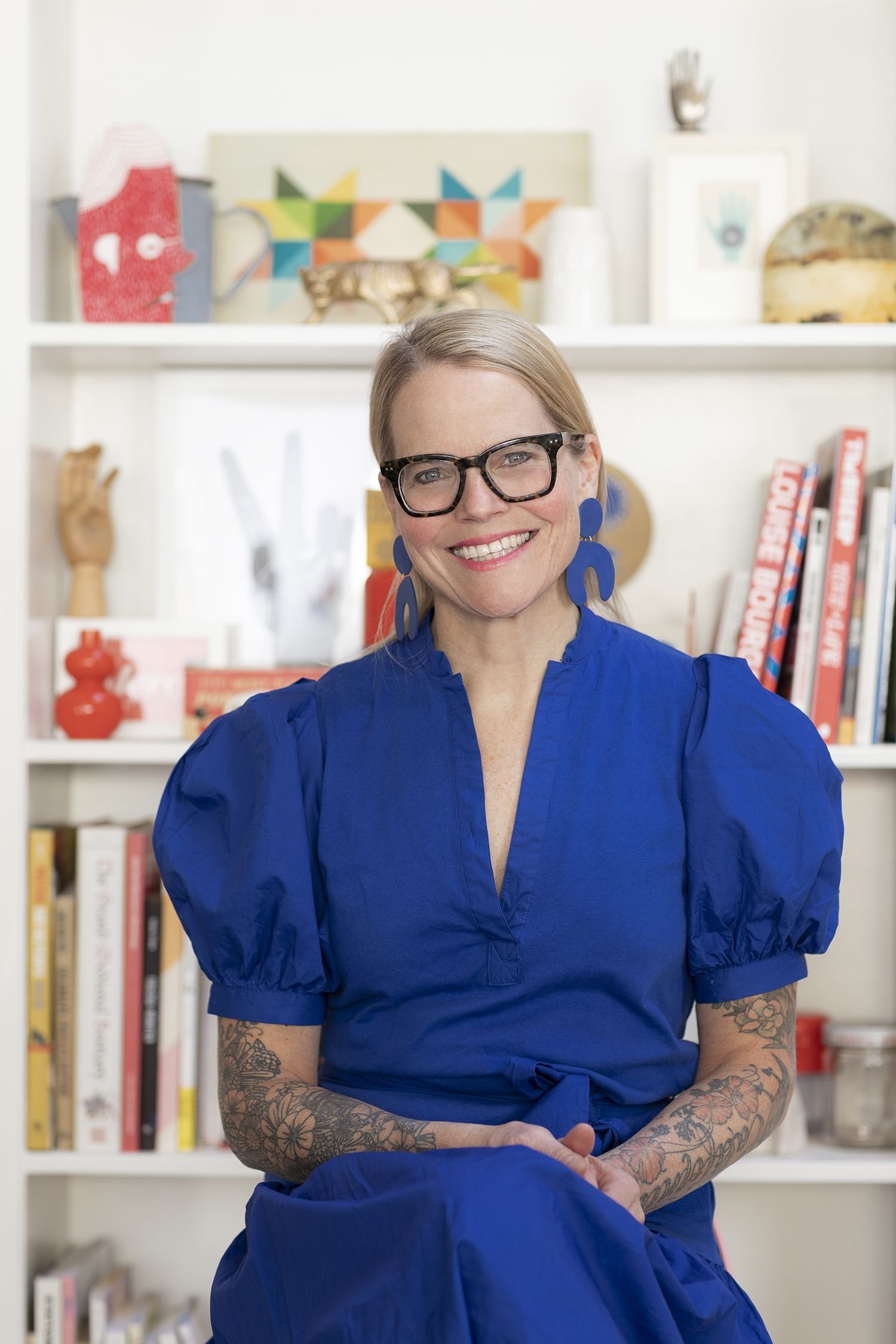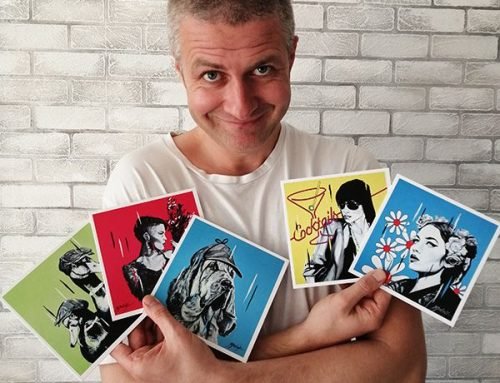In the early stages of their careers, many artists worry about developing a creative identity that will allow them to stand out from the crowd, while also fitting into a niche in the art world. In the first instalment of this two-part feature, we talk to Portland artist and author Lisa Congdon to get some insight into this task, from an artist who has already successfully gone through the process and is well placed to offer some handy advice.
Lisa’s colourful drawings and hand-lettering are recognised across the globe for their uplifting messages, vibrant palettes and geometric patterns. She has quite literally written the book on developing a creative identity – Find Your Artistic Voice: The Essential Guide to Working Your Creative Magic is available from Amazon, Barnes & Noble, and from Lisa’s web store.
Lisa developed her own style by taking inspiration from the artists who came before her: “I have always also been a collector of visual imagery, and I surround myself with and study other visual styles. I love graphic design books and have a collection of Graphis Annuals from the mid-century. I have been influenced by people like Alexander Girard, Alexander Calder, Sister Corita Kent and Paul Rand and by traditional folk art, symbolism and Scandinavian design.”
On Your Left Screenprinted Bike Poster by Lisa Congdon, 2019. Image courtesy of the artist.
Inspiration does not equal imitation, however, and Lisa has worked hard to create a unique style that belongs to nobody but her: “So from all of these influences and thousands of hours of drawing and painting, I have developed my own style and formed my own color palettes, symbols, shapes, and lettering styles that have become distinctly my own.”
Lisa believes that the first thing someone should do when they want to get a sense of their own creative language is to throw themselves into their creative practices. As she explains, “The most direct route to developing your own style, your own visual vocabulary, your own voice, is to make a lot of art. When drawing or making something every day for as little as 30 minutes, you’ll notice that, eventually, your technical skills develop.
“And when you have more of a grasp of your medium, you can focus more on taking risks and pushing your work to new and different places, which is really where your voice develops. Making art everyday also helps you to discover what you enjoy and what you are drawn naturally to in terms of subject matter or mark-making or shape building.”
“Bright Spots” by Lisa Congdon. Digital Drawing (2020). Image courtesy of the artist.
The question of developing a creative identity can be especially pressing for students who are starting to study art for the first time and are under pressure both to create art and to think about the future of their art career. To these students, Lisa Congdon recommends striking a balance between creative joy and artistic discipline:
“I always advise paying attention to your joy and also to your discipline. Joy matters, especially in the long run. That is, if you want to BE an artist, you’ll be making art, a lot of art. So you should be making art in ways that bring you joy and that motivate you. At the same time, discipline matters. And discipline is important because you cannot get better at anything without practice and without being in the uncomfortable place of being a beginner for a time.
“Sometimes we give up on things too quickly because we are too focused on the joy. Being a beginner often feels frustrating and defeating, which is the opposite of joy. So balancing a sense of ‘I love this’ or ‘I love learning this’ with ‘this is hard’ or ‘practice feels like drudgery’ is critical. I think this is especially true when you are a student.”
“Eat Happy” by Lisa Congdon. Tea towel design (2021).
At the top of Lisa’s must-have list for successful artists are “a particular perspective (what we might call talent or “an eye”), organization, mature communication skills, discipline, an ability to move on when things don’t go well, a sense of humor.”
Whether you’re beginning your artistic career inside or outside of academia, it’s worth checking out Lisa’s books on finding your artistic voice and building your artistic career. There are also plenty more places you can learn about creativity – as Lisa says, “My number one piece of advice right now is to take classes. There are so many incredible learning platforms online right now – you don’t even have to leave your home, and many of them are super affordable.”
“Learning new things from other artists takes you out of your own head, and it opens you up to new possibilities and new ways of doing things.”
The online world is more full of art, artists and art classes today than ever before and whether you’re using the web to teach, learn, share or look at art, it’s worth thinking about how you can incorporate your creative identity into your online identity. Lisa’s relationship with the online world has not always been positive, but over time she has learned to make it work for her.
“I used to hate social media. I didn’t understand how important the integration between my creativity and my identity was (not just online but in every aspect of my life). One day I woke up and realized I had to adapt. So I worked really hard on figuring out all the ways I could make the experience of being an artist online a joyful one for myself. And I found the way to do that WAS to incorporate my creative identity.”
“I began making social media an outlet for my own creativity – for my writing and art, for sharing stories that I felt might help others. It feels so seamless to me now that I sometimes don’t know how to separate the two.
“If an artist struggles with or doesn’t want to integrate the two, that’s okay. I don’t think it’s absolutely necessary. I think it’s important to get clear about your goals. Why are you online? What do you want to accomplish in this space? If any of that has to do with sharing your art, then find a way to do it that feels good. You are the boss of your own path. Innovate to find ways to share your work that feel authentic to you.”
“Gull” by Lisa Congdon. Acrylic on wood, 2020. Image courtesy of the artist.
Coming soon: watch out for the second part of this feature, where we talk to artist Jay Fortune about his approach to developing a creative identity!




Leave A Comment